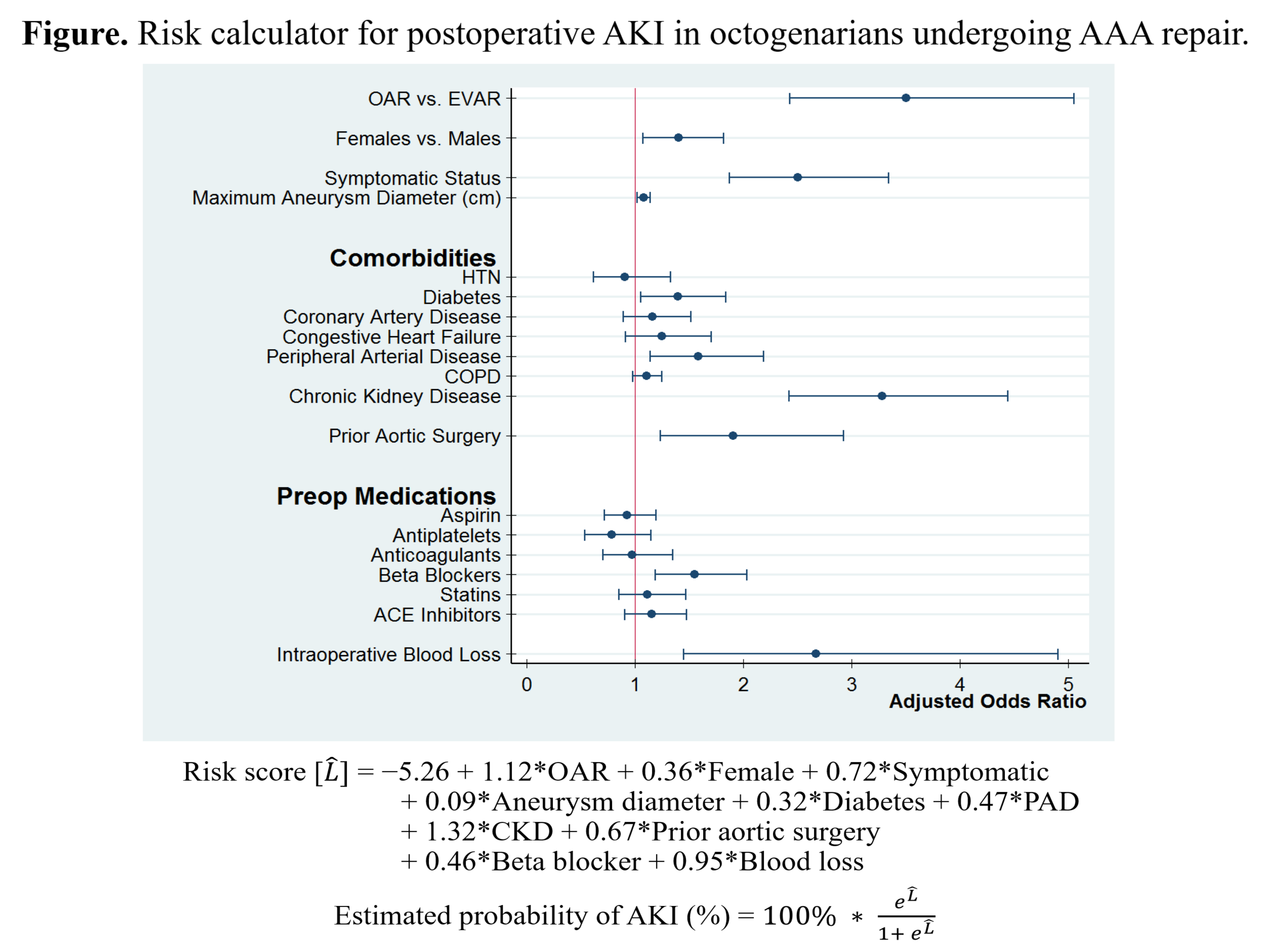Predictors of Acute Kidney Injury in Octogenarians Undergoing Infrarenal Abdominal Aortic Aneurysm Repair
Tru Dang, Hanaa Aridi, MD, Muhammad Rizwan, MD, Besma Nejim, MBChB, MPH, Mahmoud Malas, MD, MHS, FACS.
Johns Hopkins, Baltimore, MD, USA.
OBJECTIVES: Acute kidney injury (AKI) is a common postoperative complication after abdominal aortic aneurysm (AAA) repair and is associated with significant morbidity and mortality. However, limited studies have investigated this complication specifically in elderly patients. This study aimed to evaluate AKI in octogenarians following open (OAR) and endovascular AAA repair (EVAR).
METHODS: Data were obtained from the Vascular Quality Initiative database (January 2003-April 2017) on all patients who underwent elective infrarenal AAA repair. Univariate analysis was performed to compare AKI as well as failure to rescue (FTR), defined as 30-day mortality following postoperative AKI, between octogenarians and nonoctogenarians in each approach. Stepwise multivariate logistic regression analysis was implemented to identify independent predictors and develop a risk calculator of AKI in octogenarians undergoing AAA repair.
RESULTS: A total of 32,297 patients (OAR, 4184; EVAR, 28,113) were included, of which 7830 (24.2%) were octogenarians (OAR, 440; EVAR, 7390). Postoperative AKI was more common in octogenarians as compared to nonoctogenarians in OAR (16.1% vs 11.5%, P < .01) and EVAR (5.1% vs 3.0%, P < .001). Similarly, FTR following AKI was higher in octogenarians whether undergoing OAR (28.2% vs 9.8%, P < .001) or EVAR (16.8% vs 8.9%, P < .001). On multivariate analysis, we identified several independent risk factors of postoperative AKI in octogenarians including OAR approach (OR, 3.50; 95% CI, 2.43-5.05), female sex (OR, 1.40; 95% CI, 1.07-1.82), symptomatic status (OR, 2.50; 95% CI, 1.87-3.34), aneurysm diameter (OR, 1.08; 95% CI, 1.02-1.14), peripheral arterial disease (OR, 1.58; 95% CI, 1.14-2.19), diabetes (OR, 1.39; 95% CI, 1.05-1.84), chronic kidney disease (OR, 3.28; 95% CI, 2.42-4.44), prior aortic surgery (OR, 1.90; 95% CI, 1.24-2.93), β-blocker use (OR, 1.55; 95% CI, 1.18-2.03), and intraoperative blood loss (OR, 2.67; 95% CI, 1.45-4.90). These predictors were used to develop an interactive risk calculator of AKI after AAA repair in octogenarians (C-statistic = 0.735, Figure).
CONCLUSIONS: AKI is a serious complication following AAA repair in octogenarians and is associated with high FTR rates. A careful assessment of risk factors of AKI in elderly patients should be performed to inform clinical decision-making.

Back to 2018 ePosters




